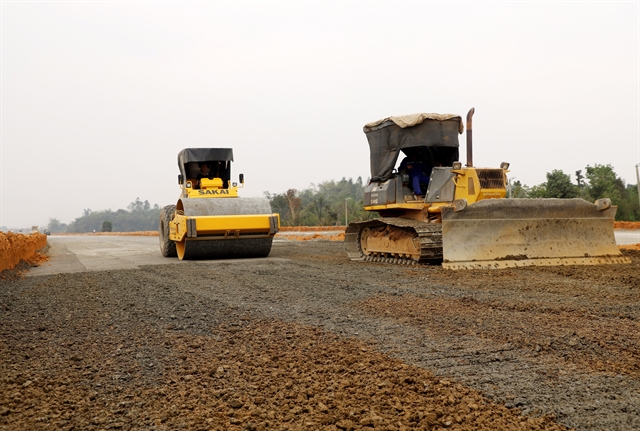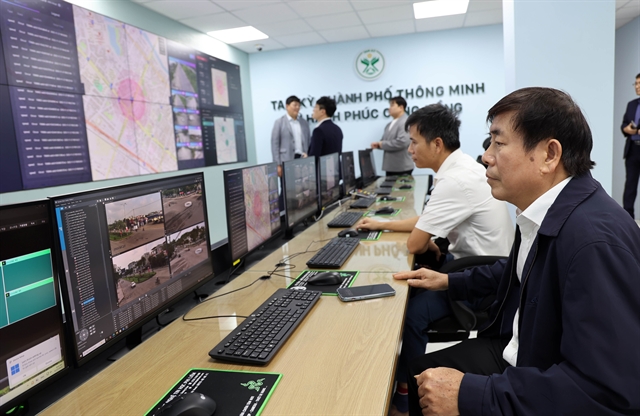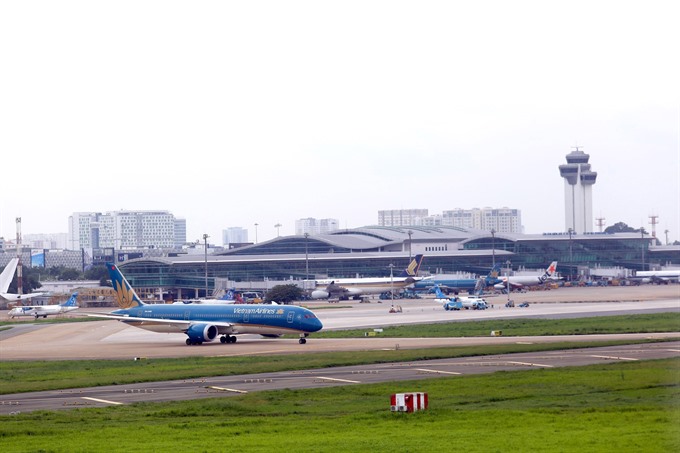 Economy
Economy

A significant wave of private investment is flying into aviation infrastructure on the back of improvements in long-term development planning for the sector in Việt Nam.
 |
| Planes at Tân Sơn Nhất International Airport. — VNA/VNS Photo Huy Hùng |
HÀ NỘI — A significant wave of private investment is flying into aviation infrastructure on the back of improvements in long-term development planning for the sector in Việt Nam.
With the master plan to operate 28 airports by 2030, including 15 domestic and 13 international ones, in which Nội Bài, Đà Nẵng, Cam Ranh, Tân Sơn Nhất and Long Thành are key international gates, Việt Nam is attracting investors to pour money into aviation infrastructure projects.
The Imex Pan-Pacific Trading Group, chaired by Johnathan Hạnh Nguyễn, has recently sent a document to Minister of Transport Nguyễn Văn Thể proposing to join the Airports Corporation of Việt Nam (ACV) to invest in Passenger Terminal (T3) at Tân Sơn Nhất International Airport.
This is the second time this year Johnathan has expressed such a desire.
Meanwhile, the real estate developer FLC Group of Trịnh Văn Quyết is also interested in investing in the aviation sector. The group has received approval in principle from authorities in the central province of Quảng Bình to invest in and upgrade Đồng Hới to an international airport.
In document No 533/UBND-KTTH, the provincial People’s Committee said the project would be implemented under a public-private-partnership (PPP) model.
Quảng Bình authorities and FLC Group have jointly asked the transport ministry to approve the project, which is expected to raise capacity from 500,000 passengers to ten million by 2020.
One of the typical examples of increased private investment is Vân Đồn International Airport. The airport is the first private one in Việt Nam invested in the form of BOT (Build-Operate-Transfer), with investment capital of VNĐ7.5 trillion (US$321.4 million).
The airport is directly invested and operated by Sun Group. The price of aviation services at the airport are still managed by the State in accordance with law.
Vân Đồn is approved by the Ministry of Transport (MOT) as an airport of grade 4E (according to ICAO standard code). It is modern with a 3.6km long, 45m wide landing strip and is capable of accommodating large cargo and passenger aircraft.
Vân Đồn Airport is scheduled to begin operation this Sunday.
In their latest report, experts from Vietcombank Securities (VCBS) said they witnessed a trend of privatisation in infrastructure investment.
“This trend on the one hand reduces pressure on the State budget and improves service quality, on the other hand it creates a less positive sign for businesses with a large market share in the industry when the market is shared,” said experts fromVCBS.
VCBS experts also assessed that aviation infrastructure had not caught up with the industry’s development. The total passenger transport market of Vietnamese airlines is predicted to increase by an average of 16 per cent per year by 2020 and 8 per cent in the period 2020-30. The passenger transport volume in 2020 and 2030 is 64 million and 131 million, respectively, according to the transport ministry’s forecast.
Meanwhile, this year witnessed the five biggest airports of Vietnam, Tân Sơn Nhất, Nội Bài, Đà Nẵng, Cam Ranh and Phú Quốc, all serve a number of passengers exceeding their designed capacity. In particular, Tân Sơn Nhất Airport exceeded the figure by 40.7 per cent.
"Despite improvements in technology, the process partially meets the increasing number of passengers each year, the expansion and upgrades to these airports is still an indispensable requirement," VCBS stressed.
According to ACV, in the period 2018-25, there will be 15 key airports that will receive upgrades. Construction works will also be undertaken on Long Thành International Airport in phase 1 and new passenger terminals for Điện Biên, Nà Sản and Lào Cai airports.
It is expected that the total investment of terminal and apron projects (excluding Long Thành Airport) amounted to more than VNĐ56.7 trillion with capital accumulated from ACV’s business activities. In addition, it needs more than VNĐ20.7 trillion to invest in the airfield projects, with capital accumulated from this area.
In the above projects, investment priority will belong to Tân Sơn Nhất Airport.
According to Deputy General Director of Vietstar Airlines Lương Hoài Nam, quoted by online newspaper vnexpress.vn at the Vietnam Travel and Tourism Summit held early this month in Hà Nội, since 1975, Việt Nam has only really built completely and put into operation Phú Quốc Airport and most recently Vân Đồn Airport, the rest are mostly upgraded from military airports with limited land funds, making the ability to expand very slight.
Việt Nam has 21 airports, while Thailand has 38. The capacity of all Việt Nam’s airports is 75 million passengers per year, which is just one-third of Thailand’s. The combined capacity of all airports in Việt Nam is that of Changi Airport of Singapore or Kuala Lumpur of Malaysia. — VNS




